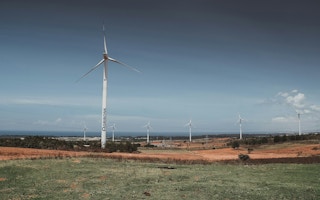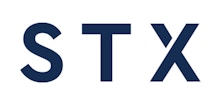For the planet to cut the bulk of its emissions, it must start with Asia Pacific.
Home to about 60 per cent of the world’s population, Asia is responsible for roughly half of the planet’s carbon emissions, according to figures from the Asian Development Bank.
However, decarbonisation will not come easy, with Asia Pacific comprising both developed nations including Japan and Australia, as well as developing economies such as China, India, and Indonesia.
This sees developing countries having to balance economic priorities with energy demands – which are rising in tandem with their growing population – making decarbonisation difficult to prioritise.
For one, many developing countries in the Asia Pacific region – especially those in Southeast Asia – still rely heavily on coal, with coal-fired power plants accounting for more than 40 percent of power generation in Southeast Asia. This makes transitioning developing economies away from carbon-intensive sources difficult and costly.
The capital required for large-scale decarbonisation efforts presents another hurdle, especially for developing countries with limited fiscal resources, along with inconsistent climate policies and disparate emissions trading schemes.
While Asia Pacific reduced its carbon intensity by 2.8 per cent in 2022 (an increase compared to a rate of 1.2 per cent in 2021) the rate pales in comparison to the 17.2 per cent decrease needed to limit global warming to 1.5 degrees Celsius above pre-industrial levels, according to according to PwC’s 2023 Net Zero Economy Index.
The report also noted that the region must achieve a six-fold increase in decarbonisation infrastructure and investments to reach those levels.
This may be why Aymeric de Condé, APAC head at STRIVE by STX, the climate action arm of STX Group, feels that Asia has “catching up to do” in its decarbonisation efforts.
STX Group is a global environmental commodities trader and climate solutions consultancy, providing advisory and financing services to help corporates and organisations in their sustainability efforts.
The company also assists APAC companies in navigating regulations such as new emissions trading schemes, carbon border adjustment mechanisms, and Scope 3 emissions reporting requirements.
Based in Singapore, de Condé leads STRIVE by STX in the region. STRIVE provides solutions and services to corporates, including consulting, compensation through carbon credits, and value chain optimisation.
STRIVE also provides reduction strategies through renewable energy certificates (RECs), which are a type of energy attribute certificate used to validate the consumption of electricity from renewable sources and offset electricity consumption from non-renewable sources.
“We have a very important role to play in APAC given our experience, expertise, and access. We’re pushing to educate and help companies in APAC to decarbonise,” de Condé said.
STX Group opened its Singapore office in 2021, and in January announced the expansion of its operations and services in the APAC region through the firm’s office in Singapore.
In this interview with Eco-Business, de Condé discusses how STX Group advises companies on decarbonisation, the increasing appetite for RECs in Asia, and how the company ensures the credibility of carbon projects in the region.

Aymeric de Condé is head of APAC of STRIVE by STX, a global environmental commodities trader. Image: STX Group
What are corporations in Asia Pacific struggling most with in their decarbonisation journey, and how is STX Group helping to overcome them?
In Asia Pacific, there is unfortunately a lack of clarity and roadmaps regarding sustainability best practices.
Different countries in the region are at varying levels of maturity, which means that government policies are at different stages. This makes it difficult for corporations to follow a reference point.
While the region is still maturing when it comes to low-carbon fuels such as biofuels or renewable natural gas, another challenge corporations face is finding the right talent and expertise, or individuals who understand available decarbonisation options, and can help companies navigate the market.
We also understand that companies face financial constraints and costs to decarbonise. We advise businesses on how to budget or “hedge” their renewable energy procurements, as renewable energy investments are typically ongoing, long-term commitments.
We also see that businesses struggle with the lack of emissions data. A lot of companies may not know how to measure their emissions, so we often have to start from the beginning. Our internal Climate Action Consulting team allows us to determine a company’s Scope 1, 2, and 3 emissions, and formulate a decarbonisation roadmap to help them understand their options.
Singapore faces renewable energy challenges, such as limited land and natural resources, and the technological capabilities needed to harness renewables. How does Strive by STX Group help clients navigate these issues locally?
At STX Group, we focus on helping companies understand their options based on their desired standard and best practices.
Yes, Singapore may lack the space to generate sizable solar and wind projects to supply the population, which is prompting some corporates to purchase renewable energy through certificates.
There are two approaches to renewable energy procurement. You have the global best practice, the RE100 (a collaborative group of businesses that have pledged to transition to 100 per cent renewable electricity via different methods), and the SS 673 (which is a national standard that covers the production, tracking, management, and usage of RECs for making renewable energy claims in Singapore, and the first of its kind in Southeast Asia). Globally, there are about 450 or 500 company members that have committed to be 100 percent renewable.
However, Singapore is presented with a unique challenge as the RE100 requires companies to procure renewable energy locally. This means that companies in Singapore have the option to comply with SS 673, which allows them to source renewable energy credits from outside the country.
The use of international certificates issued in Singapore is the primary method for corporate renewable energy procurement. You have some local companies that are doing virtual power purchase agreements through their utility or with a plan outside Singapore, but they are usually with nearby countries that have a connected electricity grid.
We focus on the certification aspect – making sure that companies understand their options based on which standards and best practices they choose to abide by.
In Singapore, we see a certain level of flexibility among non-RE100 members to follow the local standard, as it offers more flexibility in terms of sourcing renewable energy.
“
We have a large team responsible for carbon credits, and within it, a robust due diligence process to look at all projects. We make sure that whatever we offer to clients is checked by not only our team, but also rating agencies.
Aymeric de Condé
Are regulations such as Singapore’s carbon tax enough to encourage corporations to decarbonise?
Singapore is also one of the more advanced countries in the region since it has a carbon tax.
While the carbon tax guarantees revenue, it still does not guarantee that companies will decarbonise. What governments do with that revenue varies by country, but it often goes towards financing green initiatives.
Some governments in the region have gone for emission trading systems (ETS) instead of a carbon tax. An ETS is when a government sets a limit or “cap” on the total amount of greenhouse gas emissions allowed from the sectors covered by the ETS.
So, while there are different strategies, a carbon tax may not be enough to encourage corporations to decarbonise.
With an ETS, the monetary outcome may be uncertain, but it incentivises companies to decarbonise. Because if they fail to comply, they may have to pay more and more as the price of emissions allowances – by definition and mechanism – increases in the long run.
Carbon pricing mechanisms tend to start in one sector and then spread to others, including smaller companies. We witnessed this with the European Union’s ETS, as different sectors gradually committed to emissions reductions over time, so we hope these policies raise awareness and serve as a wake-up call for corporates.
Has there been increased interest in RECs within APAC?
While prices for RECs have, in some cases, doubled or tripled, demand is picking up. Other than the regulatory, investor, and consumer pressures I mentioned, companies also face increasing pressure from clients to decarbonise. When we speak with EU and US companies looking at reducing Scope 3 emissions from their supply chain, they mention the need to pressure their tier one and tier two suppliers to decarbonise.
We are also seeing this across Asia Pacific. Companies are now feeling increased pressure from clients; if they want to keep selling to Europe or the US, they need to start reducing their own emissions. In APAC, we see demand for RECs picking up due to all of these pressure points.
What are the key challenges companies in the region face in utilising RECs and how can companies use them to advance their sustainability agenda?
Renewable energy certificates are usually viewed as “low-hanging fruit” with many companies resorting to them to meet their renewable energy targets. In APAC, compared to the EU and US, the only option sometimes is to use those certificates.
This is primarily because the APAC region lacks a “liberalised” or wholesale power market similar to those seen in Australia, Europe, or the US. Countries like Malaysia or Thailand, for instance, only have one government-owned utility, which limits the available options for companies and consumers. While we are seeing some policies to provide clean electricity and green options, the most likely route, in many cases, is still conventional energy sources.
But as the global shift towards renewable energy intensifies, it will become increasingly important for companies committed to RE100 to transition to 100 per cent renewable energy.
In light of reliability concerns regarding carbon credits and offsets, how does STX Group ensure the credibility of its carbon projects and credits?
We have a large team responsible for carbon credits and within it, a robust due diligence process to look at all projects. We make sure that whatever we offer to clients is checked by not only our team but also rating agencies. We’re accredited sellers under the International Carbon Reduction and Offset Alliance and part of the accreditation committee. This helps to ensure that we are at the forefront of improving the integrity and quality of the standards.
We also provide innovative structured contracts where we can guarantee volume, price, and quality so clients can have peace of mind.
When it comes to transparency, you have to be able to provide end buyers with additional information about the credits being offered and the project it is connected to. With that said, we make an effort to have a direct relationship with each project to understand what is behind each of them.
This article has been edited for clarity and brevity.











